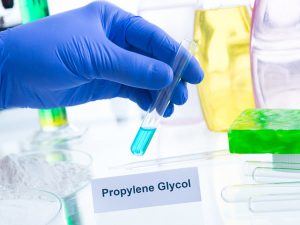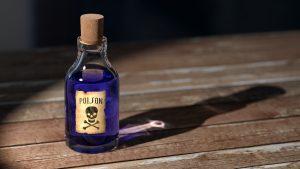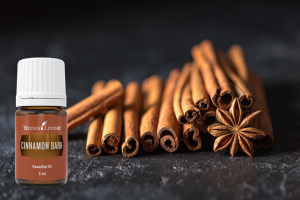Toxic Toothpastes & a natural alternative
31.10.2019
The 4 Toxic Toothpaste Ingredients You Need to Avoid (And the Solution That Keeps Your Children Chem-Free)

Your children use toothpaste every single day. But is their quest for pearly whites as healthy as you think? Many toothpastes contain ingredients that are toxic to your children. Like any good parent, you follow the advice that your dentist gives you. Your children brush their teeth twice a day and everything seems fine on the surface. They have strong and white teeth so everything’s as it should be, right? Unfortunately not.

There’s a problem lurking within many brands of toothpaste. That pea-sized portion you’re using contains toxins and chemicals that slowly undermine your children’s health.
And the worst part is that you don’t even see it happening. These chemicals get absorbed through the gums and accumulate in the cells. It doesn’t even matter how much your children spit out. That bioaccumulation is going to add up to problems over time. Every day, a little more is added to the pile of microscopic garbage that’s building up in their bodies.

Does that sound a little far-fetched to you? What many parents don’t realise is that absorption through the oral cavity is extremely fast. According to one study, it occurs in a matter of minutes¹.
By the time your child goes to spit it out, it’s already too late.
The good news is that there are two things you can do about it. The first is to choose a chem-free toothpaste that doesn’t present a risk to your kids. Young Living has a fantastic toothpaste for children that ticks all the “healthy” boxes. I’ll come to that in a moment.
However, the second thing you can do is to gain a little bit of helpful education about the terrible toxins that could negatively affect your child’s health over time. When you know what to look out for, you become an empowered parent. Here are the top four “nasties” I like to look out for in toothpaste:
Toxin #1 – Propylene Glycol

Propylene Glycol is a type of mineral oil….and it’s not at all natural. In fact, it’s used in paints, antifreeze, and aeroplane de-icers?
Suddenly, the fact that it’s often found in commercial toothpaste isn’t as appealing.
The research suggests that infants, children, and women should all avoid this toxin. A review in The Journal of Pediatric Pharmacology and Therapeutics examined the issue in more detail.
Researchers found that Propylene Glycol can accumulate to the point where it causes comas, seizures, and hypoglycaemia². Furthermore, pregnant women, children and infants under 4 years old may be at risk. These groups have lower levels of an enzyme that is essential for breaking down propylene glycol.
Despite this, many toothpaste and commercial care brands still use it as their “humectant”, meaning it helps their product retain its moisture. In fact, you’ll find it in a bunch of medications too, and even in some baby food and pet food!!! Be on the lookout for it, and avoid any toothpaste that contains this dangerous oil.
Toxin #2 – Sodium Lauryl Sulfate (SLS)
That lovely foam from your toothpaste may make your kids feel like they’re giving their teeth a good clean. But the problem is that this foam often comes from Sodium Lauryl Sulfate (SLS), or Sodium Laureth Sulfate.
Many commercial toothpaste companies use it because it’s an inexpensive foaming agent. However, it’s another chemical which presents a clear danger to your kids.
Let’s start with the basic stuff. There’s evidence to suggest that SLS is an irritant that can lead to the development of canker sores³. But if you dig a little deeper, the true dangers make themselves known.
SLS can affect the entire DNA structure of a child’s body. It’s capable of denaturing proteins⁴, which tears them apart and leaves them insoluble.
Proteins are the building blocks of the human body. Do you really want your children ingesting something that destroys these important building blocks?
Toxin #3 – Parabens
These are preservatives that you’ll find in all sorts of commercial personal care products, including toothpastes. This wide use could lead to you assuming that they’re safe for consumption. However, there’s an increasing body of research that suggests it’s something to avoid, because parabens mimic the function of oestrogen⁵.
Imagine the havoc this can wreak on a developing body? Teenagers, in particular, are already going through enough hormonal changes that this chemical could disrupt.

The worrying thing is that parabens may play a part in the early onset of puberty⁶.
Consider the statistics provided by German researchers. In 1860, the average age for girls reaching puberty was 16.6 years. In 2010, it was 10.5 years!!!⁷
A 2018 study examined how parabens contribute to these phenomena.
It discovered that parabens in personal care products can lead to earlier breast and pubic hair development⁸. That’s scary stuff!
Toxin #4 – Diethanolamine (DEA)

Just like SLS, DEA is a foaming agent. And also like SLS, it presents a very clear danger to your children.
Animal studies conducted on DEA shows that it leads to an increased occurrence of liver and kidney tumours⁹. That means your kids absorb a potential carcinogen every time they brush their teeth with toothpaste that contains this chemical.
The chemical has already been banned in the EU. However, it’s still present in many Australian toothpastes.
The Alternative Solution That’s Completely Chem-Free
That’s just a small sample of the dangerous chemicals that are often present in commercial children’s toothpaste. It’s enough to make you want to stop your children from brushing their teeth!!! But don’t take such drastic action yet. Fortunately, Young Living has a specially formulated children’s toothpaste which tastes great, is free of all known harmful chemicals, and is infused with Young Living’s pure and potent essential oils.
Better yet, it contains absolutely NO fluoride, preservatives, dyes, or artificial flavours. It’s as natural as a toothpaste can get, and still provides the cleaning action that your children need to keep their teeth healthy.

Introducing Young Living’s KidScents Toothpaste
KidScents is an all-natural toothpaste that contains absolutely none of the chemicals I mentioned above.
And its use of natural ingredients makes it a powerful plaque-buster for kids. Here are three reasons why this is such a great alternative to commercial toothpaste.
Reason #1 – It Contains Virgin Coconut Oil
If you want to take the fight to the bacteria that live in your children’s mouths, you need lauric acid. Studies show that lauric acid is capable of destroying the harmful bacteria that lead to bad breath, tooth decay, and gum disease¹⁰. Coconut oil contains an abundance of lauric acid, allowing KidScents to offer the same oral hygiene benefits as commercial toothpaste, with none of the chemicals.

And it’s not just the build-up of bacteria that coconut oil fights against. A study of 60 people found that coconut oil starts to destroy plaque within one week of use!!! After 30 days, it reduced the participants’ plaque score by an average of 68%¹¹. The same study shows that it combats gingivitis too!
Reason #2 – It Contains Cinnamon Oil for Gum Support

Cinnamon oil may not be the first ingredient that you think of when it comes to maintaining tooth and gum health. However, it’s capable of providing plenty of support to growing teeth.
For example, it protects young mouths from the irritation that many commercial toothpastes cause¹². It also has similar properties to coconut oil, and it adds a beautiful flavour to the toothpaste.
Reason #3 – It’s Completely Child-Friendly
How many times have you had to tell your children not to swallow their toothpaste? And how many times have they ignored you and done it anyway?
Even if they don’t mean to, it’s easy for children to swallow toothpaste as they brush. When they do that with a commercial toothpaste, they’re directly ingesting a bunch of chemicals.
There are reasons why so many toothpastes have labels that warn against swallowing. Surely something that’s not safe to swallow isn’t safe to put in your child’s mouth?
This is another area where KidScents Toothpaste stands apart from commercial brands. The use of all-natural ingredients makes it perfectly safe to swallow, with no negative health ramifications. It’s great to know that you’ve got nothing to worry about if your children happen to swallow some of the toothpaste while brushing.
Get the Chem-Free Alternative Today
Why trust the commercial toothpaste brands when it’s clear they don’t have your children’s interests at heart? If they did, they wouldn’t load their products with harmful toxins and chemicals.
If you’re not yet using Young Living’s toothpastes, just check the ingredients of the toothpaste you have at home. The odds are high that you’ll find at least one of these toxins contained in it.

If you’re not yet using Young Living’s toothpastes, just check the ingredients of the toothpaste you have at home. The odds are high that you’ll find at least one of these toxins contained in it.
KidScents offers a natural alternative that ensures your children don’t get exposed to dangerous chemicals. Better yet, it contains plenty of ingredients that offer potent cleaning action with none of the downsides.
You can find it, and many more chem-free products for your kids, through Young Living. Switching to a low-tox lifestyle is a simple step you can take to empower the health of your family.
If you’ve not ordered from Young Living before, or if it’s been more than 12 months since you’ve placed an order, please reach out to the person who introduced you to my essential oils bulletin for their assistance. If you’re not sure who that is, or no longer in contact with them, please reply to this email and we’ll be in touch.
Resources:
- https://www.webmd.com/beauty/
news/20180705/banned-from- soap-triclosan-in-toothpaste - https://gf-oils.com/product/
slique-toothpaste/ - https://www.youngliving.com/
en_GB/products/kidscents- slique-toothpaste - https://www.medicalnewstoday.
com/articles/180370.php - http://www.theoilacademy.com/
online_course/oils-kids-an- online-class/ kidscentstoothpaste/ - https://
greathealthstartsfromnow.com/ 2016/05/17/kidscents- toothpaste/
References:
- https://www.ncbi.nlm.nih.gov/
pmc/articles/PMC3513449/ - https://www.ncbi.nlm.nih.gov/
pmc/articles/PMC4341412/# - https://www.ncbi.nlm.nih.gov/
pubmed/9656847 - https://www.ncbi.nlm.nih.gov/
pubmed/19802818 - https://www.ncbi.nlm.nih.gov/
pmc/articles/PMC5618656/ - http://www.nytimes.com/2012/
04/01/magazine/puberty-before- age-10-a-new-normal.html?_r=3 - https://www.theguardian.com/
society/2012/oct/21/puberty- adolescence-childhood-onset - https://academic.oup.com/
humrep/article-abstract/34/1/ 109/5204432?redirectedFrom= fulltext - https://www.epa.gov/sites/
production/files/2016-09/ documents/diethanolamine.pdf - https://www.ncbi.nlm.nih.gov/
pmc/articles/PMC3119748/ - https://www.ncbi.nlm.nih.gov/
pubmed/25838632 - https://www.ncbi.nlm.nih.gov/
pubmed/25629927
If you’re not already receiving our weekly
Raw Divinity bulletin, CLICK HERE to subscribe
